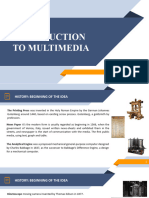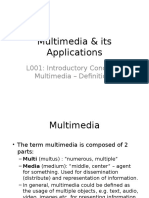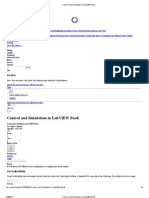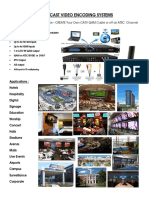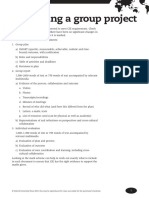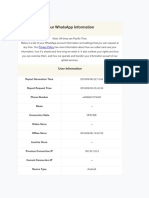0% found this document useful (0 votes)
23 views3 pagesLecture 1 Introduction To MM
The document defines multimedia as computer-based integration of various media types including text, graphics, images, audio, video and animation. It discusses the history of multimedia, including early uses of text, graphics and images in newspapers in the 1800s. Radio transmission in the 1890s and television in the 1900s brought audio and video. Important developments in computing include Van Dam and Nelson's hypertext editor in 1969, the creation of email in 1971, and Tim Berners-Lee's proposal of the World Wide Web to CERN in 1989. Current trends continue to involve greater integration of media types.
Uploaded by
teckmeruCopyright
© © All Rights Reserved
We take content rights seriously. If you suspect this is your content, claim it here.
Available Formats
Download as DOCX, PDF, TXT or read online on Scribd
0% found this document useful (0 votes)
23 views3 pagesLecture 1 Introduction To MM
The document defines multimedia as computer-based integration of various media types including text, graphics, images, audio, video and animation. It discusses the history of multimedia, including early uses of text, graphics and images in newspapers in the 1800s. Radio transmission in the 1890s and television in the 1900s brought audio and video. Important developments in computing include Van Dam and Nelson's hypertext editor in 1969, the creation of email in 1971, and Tim Berners-Lee's proposal of the World Wide Web to CERN in 1989. Current trends continue to involve greater integration of media types.
Uploaded by
teckmeruCopyright
© © All Rights Reserved
We take content rights seriously. If you suspect this is your content, claim it here.
Available Formats
Download as DOCX, PDF, TXT or read online on Scribd
/ 3

















